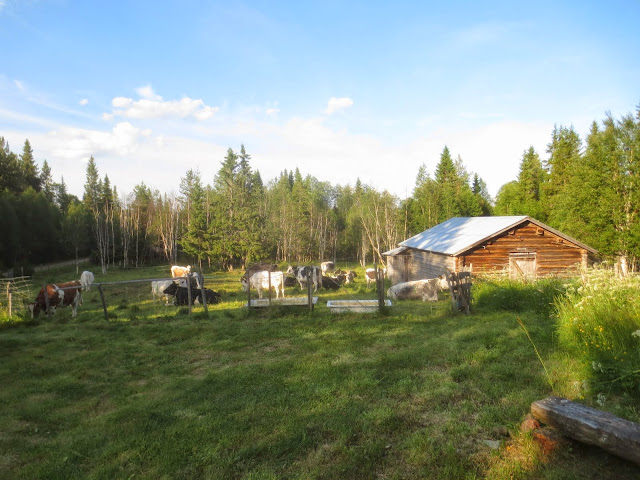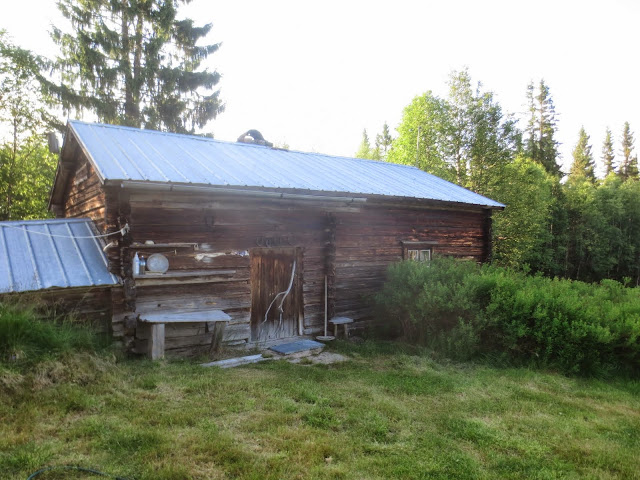Farming communities have always been dependant on their livestock. This is no different in central Sweden where I live. Summers are short and intense and the most has to be made of the luscious summer grass. Barley, potatoes and vegetables were grown in the villages so the women and children took the livestock up to the summer pastures. There they made cheese and butter and collected berries and fungi for the winter months. The day of the "exodus" was a day of excitement and festivity everyone took part in the buföring.
How things have changed. On Friday my neighbour had to ta ke 25 cows up to the summer grazing. I and a friend from Denmark helped him. He put a bell on the lead cow and a bell around his own shouldres and led the way 5 miles gently up hill. The cows are old and know the way so the walk was a pleasant meander.
They are kept in a little enclosure at night but are allowed to roam for miles during the day. At first they stay around the small huts but as the grass gets scarse they wander further afield. 100 years ago when there was a lot of livestock, the villagers moved up to another fäbod 6 miles further up the mountain after a month so as to ease the pressure on the grazing.
But now there are only 25, the small houses are empty and the hills echo of -silence.



